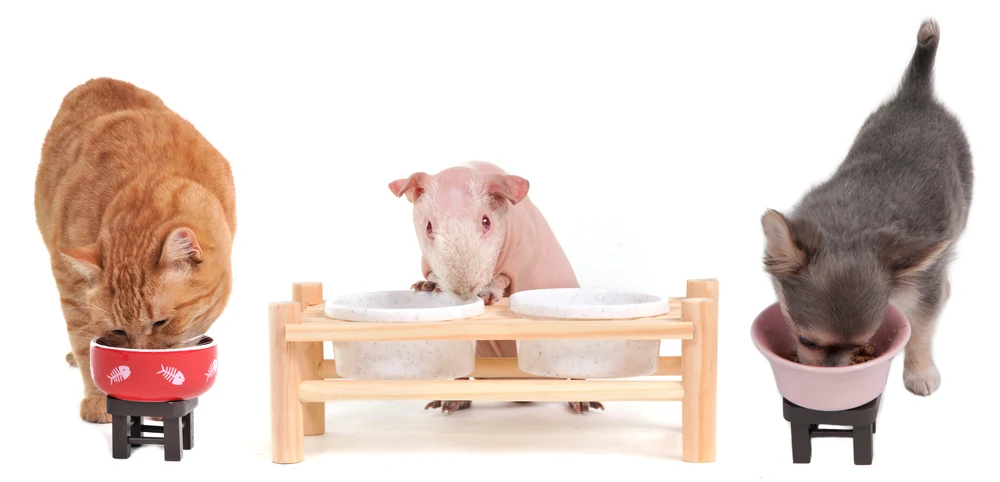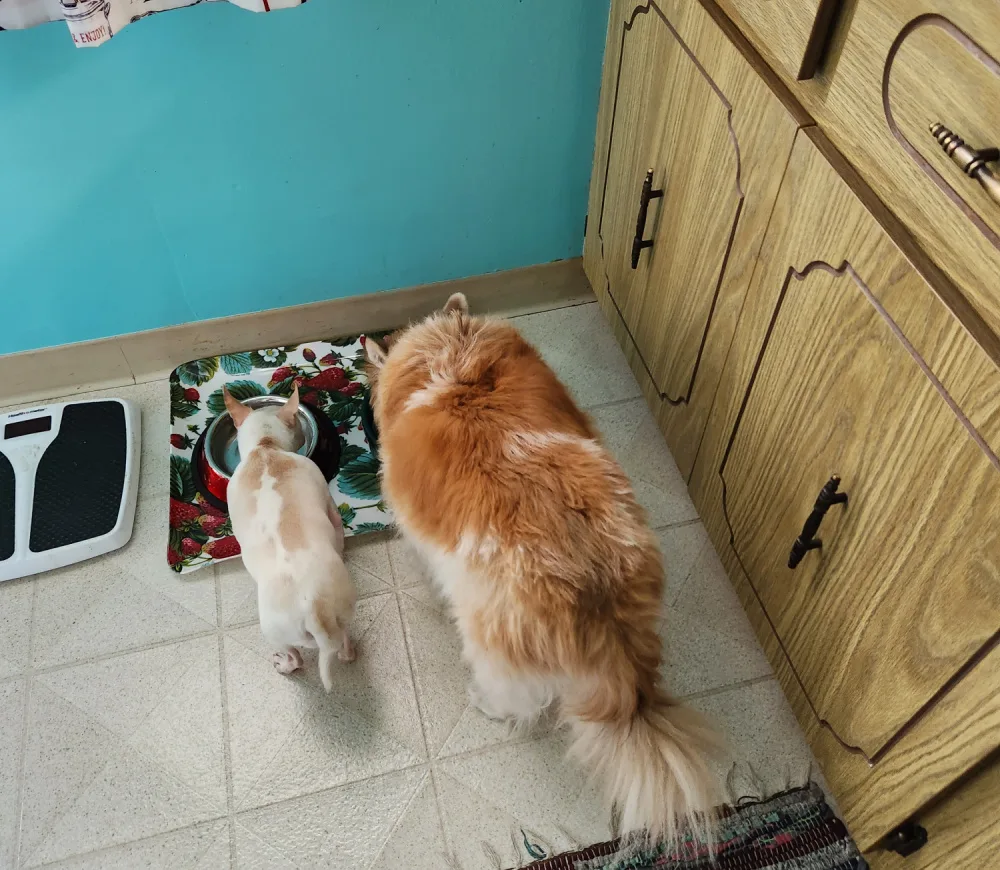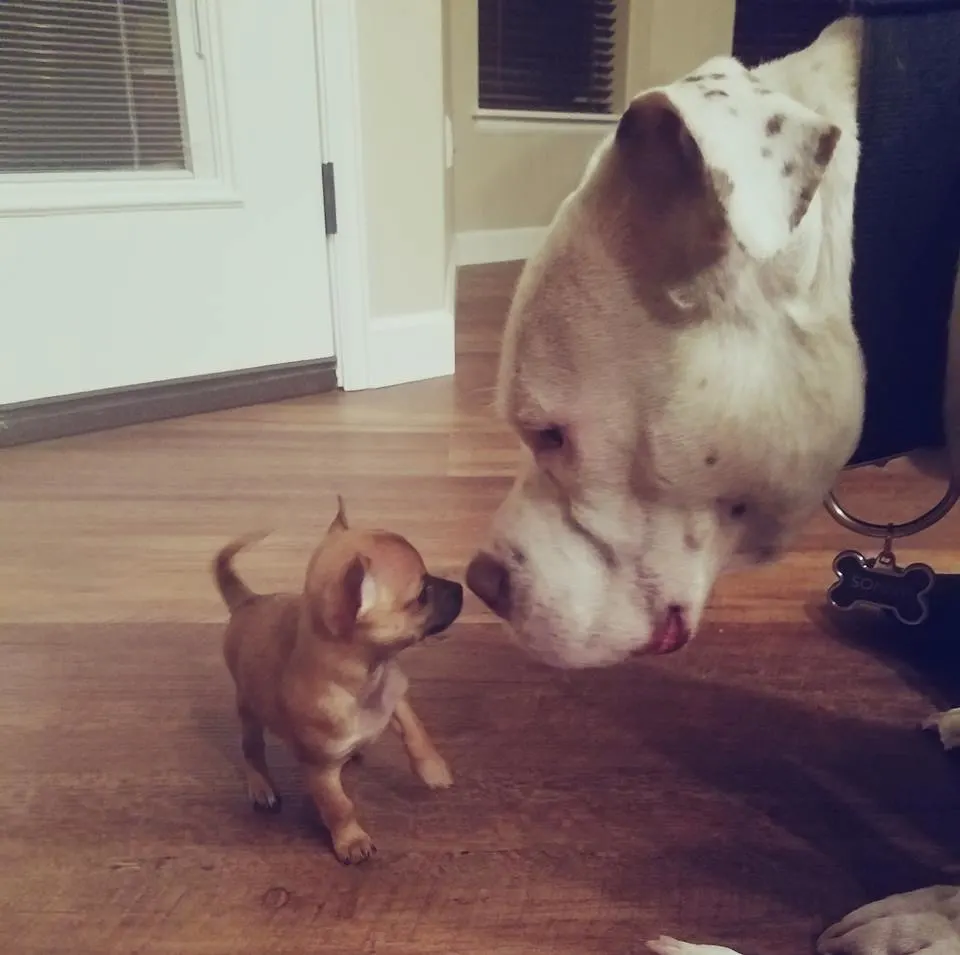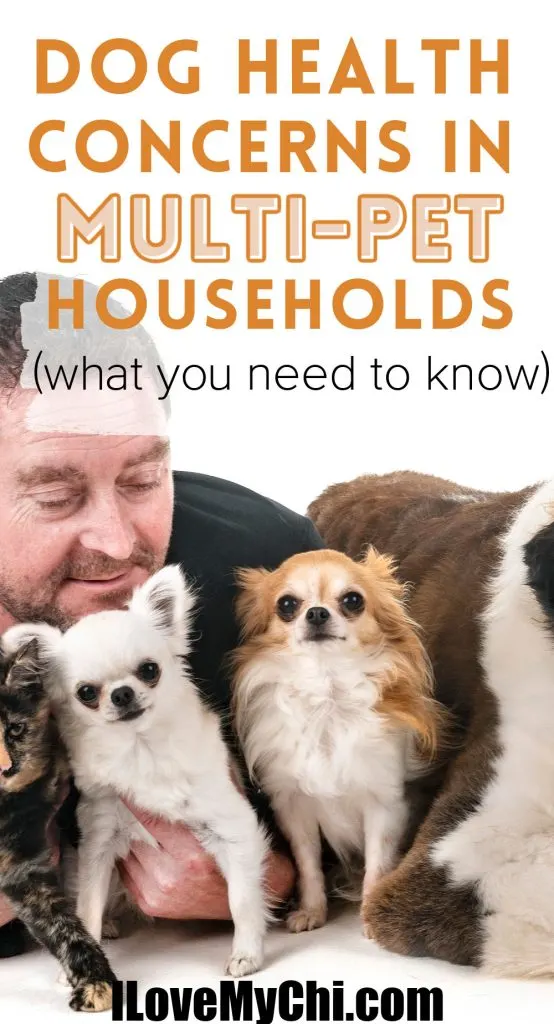Multi-pet households can be a source of immense joy, companionship, and laughter. That said, they also come with a unique set of challenges, especially when it comes to their health and well-being.

In this comprehensive guide, we’ll discuss dog health concerns in homes with multiple pets. We will examine the most common issues that can arise, how to resolve them, and how to keep your home tranquil for all of your furry, feathered, and scaly companions.
Benefits of Multi-Pet Households
Having multiple pets in a single household can offer numerous advantages for both the animals and their human caregivers. Here are some of those benefits.
Mutual Companionship
One of the most apparent benefits of multi-pet households is the companionship pets provide to each other. They can form deep bonds and provide emotional support, reducing feelings of loneliness or separation anxiety when their human caregivers are away.
Enhanced Human Interaction

Multi-pet households often encourage more social interaction among family members as they engage with and care for their pets. This can strengthen family bonds and promote positive relationships.
Reduced Stress and Anxiety
Pets have been shown to reduce stress and anxiety in their human caregivers. In multi-pet households, this effect can be magnified as the presence of more animals often leads to a more relaxed and cheerful atmosphere.
Increased Happiness
The sheer joy of seeing multiple pets coexisting harmoniously and displaying affection toward one another can bring immense happiness to the household. This happiness can also extend to improved mental health for the humans living there.
Teaching Responsibility
Multi-pet households offer a unique opportunity to teach children responsibility, empathy, and compassion. Caring for different pet types can impart essential life skills and help instill a sense of respect for all living creatures.
Learning About Diversity
Having different kinds of pets can be a great way to learn about various species, their needs, and their place in the natural world.
The Dynamics of Multi-Pet Households

To ensure the general welfare and harmony of all the animals in a multi-pet family, it is essential to understand their dynamics.
This section delves into various aspects of these dynamics, shedding light on the complex relationships, hierarchies, and stress factors that can affect your dog’s health.
Types of Pets in Multi-Pet Households
Dog-Dog Relationships
Dogs have unique social hierarchies and interactions. It is crucial to understand how they establish authority, develop alliances, and communicate with one another. Age, breed, and gender are just a few variables that can affect these interactions.
Dog-Cat Interactions

If you have both dogs and cats, you’ll need to consider their contrasting behaviors and instincts. Some cats and dogs get along famously, while others may need more time and patience to coexist peacefully.
Other Pets
Multi-pet homes can include a range of animals, such as birds, rabbits, or rodents. Each species has its own set of behaviors, requirements, and potential interactions with your dog. For example, the Rosy Tetra care guide would differ from the Chihuahua care guide. Paying attention to these differences is crucial to the well-being of all your pets.
Interactions and Hierarchies
Social Hierarchy
Dogs, especially in multi-dog households, establish hierarchies to determine who’s the alpha or leader. This hierarchy can change over time and may lead to conflicts or stress if not managed appropriately.
Territorial Behavior
Pets may exhibit territorial behaviors, especially concerning food, toys, or sleeping areas. Understanding these behaviors can help prevent conflicts and aggression.
Pack Mentality
Dogs are pack animals, and they may view your family as their pack. Understanding how this mentality influences their behavior can aid in fostering a sense of security and cooperation among all your pets.
Stress Factors for Dogs

Competition for Resources
In a multi-pet household, dogs may experience competition for resources like food, attention, and personal space. This can lead to stress and anxiety if not managed properly.
Overstimulation
Too much activity or interaction, especially in larger multi-pet households, can overwhelm dogs. Recognizing signs of overstimulation, such as restlessness or aggression, is essential for their well-being.
Social Stress
Dogs are sensitive to social cues and may feel stressed if they perceive tension or conflict among other pets in the household. This stress can manifest in various ways, including behavioral issues and health problems.
Common Health Concerns
Now, let’s delve into the specific health concerns that can arise when you have a dog living alongside other animals.
This section will provide information regarding when you should visit a vet. Remember, being informed is the first step in providing the best care for your furry friends.
Zoonotic Diseases
Zoonotic diseases are sicknesses transferred between animals and humans. While the risk is generally low, it’s essential to be aware of potential health hazards, especially if you have children in your household.
Common zoonotic diseases include ringworm, toxoplasmosis, and salmonellosis. Regular vet check-ups and maintaining good hygiene practices are key to reducing these risks.
Parasites
Fleas, ticks, and worms can affect not only your dog but also your other pets. In a multi- pet household, parasites can spread rapidly if left unchecked. Ensure all your pets are on a regular parasite prevention program and consult your veterinarian for the best approach.
Food and Allergies

Different pets may have different dietary requirements and allergies. Dogs, cats, and other animals have unique nutritional needs. Make sure you’re feeding each pet the appropriate diet and be aware of any allergies that could affect your dog or other animals.
Behavioral Issues
Stress, competition, and anxiety can lead to behavioral problems in dogs. These might include aggression, excessive barking, or withdrawal. Address these issues promptly through training, socialization, and providing plenty of individual attention.
Tips for a Healthy Multi-Pet Household

Maintaining a harmonious multi-pet home is not without its challenges, but it’s entirely possible with the right approach and mindset. Here are some actionable tips to ensure your pets live together in harmony:
Gradual Introductions
When welcoming a new pet into your house, start slowly. Allow your dog and other animals to get acquainted in a controlled environment. This can aid with stress reduction and curb any aggressive behavior.
Separate Feeding Areas
To avoid food-related conflicts, ensure that each pet has a designated feeding area. This helps prevent competition and ensures that every animal gets the nutrition they need.
Regular Vet Check-Ups
Regular vet visits are essential for all your pets. These visits allow your veterinarian to monitor their health, provide vaccinations, and address any concerns promptly.
Supervision and Training
Supervise interactions between your pets, especially during the initial stages of introduction. Positive reinforcement training can help create a positive atmosphere and reinforce good behavior.
Conclusion

Multi-pet homes can be a source of endless joy and companionship, but they also come with unique challenges, particularly when it comes to the health of your furry friends.
By knowing how pack mentality works, being aware of common health problems, and following the tips in this guide, you can make sure that your dog and other pets have a safe space.
Keep in mind that your dogs’ health depends on you being observant and taking them to the vet often. With the right care, training, and attention to each pet’s needs, your home can be a loving and peaceful place for all members.

